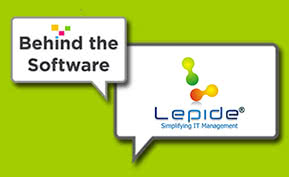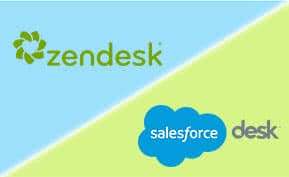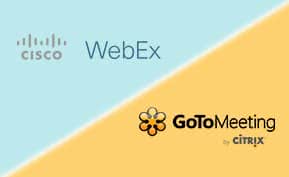Browse Business Software Categories

David Self
David Self is the former Marketing Manager at Business-Software.com, where he helps drive client success and contributes original content. Did you like this post? Be sure to share your feedback on our company Twitter page!



A Year in Review: What Survived the Cutting Room Floor
As the Marketing Manager for Business-Software.com, I am inundated with blog ideas, outlines on napkins and drafts galore from my darling little team. Most ideas are left somewhere on the cutting room floor (ie: my cubicle, not the place in Hollywood) but occasionally I find a golden nugget or two in the midst of all the scribbled pages and broken dreams.* Well my friend, without further adieu — I give you my favorite Business-Software.com blogs from 2016 (in no particular order.)

3 Key Steps to Creating the Company Culture People Want to Join
Company culture and employee satisfaction should not measured by the pounds of swag doled out each week. Sure, employees appreciate fancy Apple Watches, trips to the beach and corporate gas cards, but these aren’t the things that will keep your new-hire around for the long haul.

The #1 Productivity Hack (As Told By Dogs)
I was never a morning person, nor did I understand how people can function before the sun rises in the morning. In my eyes, 4:30 am was still the middle of the night — and therefore should be spent eyes closed in a warm bed. It wasn’t until coming to Business-Software.com that I had to make the difficult and life-altering choice between coming into the office early, or sitting in nearly two hours of traffic during my forty-five minute commute. I knew it would be challenging and I was fairly certain I wouldn’t ever be able to describe myself as a morning person — but a year and a half later, I have to say I was wrong.

Hot or Not: A Look at the 3 Leading Payroll Solutions
With January (already) in the rearview mirror, it would be wise for you to take stock of 2016 thus far. Were you able to stick to that resolution, stay on top of your to-do list or perhaps settle into that corner office? Whether you’re spending hours getting brought up to speed in a new role or simply re-committing to your current position, it’s imperative to make note of where you have been-- and more importantly -- where you are headed.

3 Truths and a Lie About Keeping Your Employees Engaged
When discussing employee happiness, people often mistake teams utilizing catered lunches, Hot Yoga Tuesdays and commuter benefits for employee engagement. Sure, while these perks are incredible to offer to employees (and even more incredible to take advantage of) employee engagement stems from the company’s values, dedication to development and potential for growth, not fun little freebies.

Let's Talk Lepide: Behind the Software with Aidan Simister
Unlike tools used by other departments, IT software hasn’t been terribly exciting or changed much over the years. Compared to the modern interfaces of sales software, the ease of use that CRM software boasts and the collaborative approach you see used by marketing teams, the platforms IT teams do have are downright dull. Luckily, a group of developers noticed this pattern, and in 2005, set out to change the way IT teams work. Those developers have since shifted the look of the IT software landscape across the globe.

3 Truths and a Lie About HCM Software
To combat a crumbling facade, companies implement human capital management (HCM) software. The primary benefit of an HCM solution is the centralization of the necessary data and records to manage personnel — including recruiting efforts, training, attendance, management and benefit administration. Moving beyond the simple logging systems of yesteryear, today’s solutions aim to foster a unique and meaningful relationship between the company and employee.

What Is Sales Acceleration and Why Is It DF15's Buzzword?
The buildup to the annual Dreamforce Conference in San Francisco is electric. With fresh billboards along the 101, an endless cascade of trending topics and list after list of this year’s ‘it’ software segment, you can definitely feel the energy buzzing around Silicon Valley. This year, one of those conference buzzwords is sales acceleration. Not unlike the Pumpkin Spice Latte, sales acceleration as a concept isn’t new, yet the software world seems completely captivated with idea. Before we take a look at the leading sales acceleration companies taking over Dreamforce, we need to fully understand what the segment is and why it’s gaining so much traction in the market.

3 Powerful Email Marketing Tools for Small Businesses
While email marketing and automation is a common feature in enterprise software solutions, the prices can be far out of reach for smaller companies of 10 to 20 employees. The three web-based platforms below offer an affordable solution to the small businesses -- without cutting out functionality. Pricing for this comparison was based on a package level under $40 per month, with an average of 2,500 contacts.

The 7 Key Steps to Landing Page Optimization
With 48% of marketers building a new landing page for every campaign and 68% of B2B marketing teams implementing landing pages for lead generation, it’s a bit of a surprise to see the conflicting strategies around landing page optimization. In researching the best practices for optimization, one will find the opinions of freelance consultants, Fortune 500 analysts and even landing page optimization experts -- all with some of the same, but mostly different views.

6 Must-Have Features for Small Business Accounting Software
It's a safe bet to say that most small business accounting solutions offer the following six features, or at least a majority of them. As a small business owner, your time is not only limited, it's valuable -- let these six features work for you, so you can focus on growing your business and following your passions. (Unless your passion lies in spending hours managing all-things accounting...)

Ultimate Customer Service Showdown: Zendesk vs Desk.com
Knowing which customer service product is the right fit for your company is a bit more complex than software giants lead users to believe. There are a multitude of areas and focuses special to your business -- some platforms may cater to those and others may not. This is the Ultimate Customer Service Showdown: Zendesk vs Desk.com.

3 Powerful Collaborative Project Management Platforms
A quick Google search of, “collaborative project management software”, will result in multiple pages of platforms from companies based around the globe, each one promising to be better than the last. It’s easy to get caught in the creative writing cross-fire that is online advertising, which is why we’ve done the research and tested the platforms for you.

7 Must-Have Collaborative Project Management Features
Anyone who's tried to manage a project through their email inbox knows that the task is far more complicated than originally imagined. With a flood of emails pouring in, lack of workflow capability and limited folder and filtering options, it’s safe to say that an email inbox is probably not the best place for your project’s pieces to come together. In today’s post, we outline some of the key features that users desire from collaborative project management software applications.

7 Must-Have Features of Payroll Software
Moving into the twenty-first century, with the rapid advancement of technology, the power players of yesteryear are gaining some new competition in the HR and payroll software markets. With the implementation of one of these software platforms, payroll doesn’t have to be a stress-inducing, labor-intensive process. Teams can finally trust the software to work for them -- taking the pain out of payroll.

The Ultimate Web Conferencing Tool: WebEx vs GoToMeeting
It doesn't come as a shock that thousands of businesses have found these two web conferencing software tools invaluable, with both providers having never-ending funding, 10-20 years of market-share and the trial and error of real-world experience in their back pockets. Through the adoption of web conferencing software, companies may expect an increase in departmental collaboration, employee satisfaction and morale and even bottom-line profits (with less travel-time, paid employee expenses and in some cases, a shorter sales cycle). Let’s dive into the inner workings of both WebEx and GoToMeeting to see how they stack up against one another.

4 Standout POS Software Solutions for Small Businesses
Unlike big box stores, small businesses face a unique challenge when it comes to selecting and implementing a point-of-sale (POS) software system. Small business owners are often slammed with higher transaction costs, as their annual sales revenue doesn’t warrant a discount from the processing companies. What’s more, as a small business owner, it’s on you to research and select the best possible solution for your type of business, number of employees and degree of third party integration.

Medical Software 101: A Guide to the Top 4 Medical Software Solutions
With a variety of software sub-segments and platforms catering to the management of a medical office -- it can be confusing to know what your practice really needs. What’s more, the functionality, key features and scope of the applications listed below are increasingly overlapping one another and often include more integrations to one another -- adding to the confusion. While users can purchase an all-in-one solution, we recommend knowing the ins and outs of each option before making a decision.
